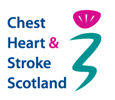Case Study – Margaret
- View text alternative
-
Scene 1
Margaret is 72 years old and has COPD. She knows that she needs to allow herself enough time to get ready whenever she goes out. On this particular morning she has an early appointment at the hospital that she has been waiting several months for. She is getting picked up by her son John and she has not slept well for fear of sleeping in. She feels breathless when she wakes up and it takes her longer to take her medication and get dressed even although she had everything laid out the night before.
Scene 2
Her son, John arrives before she is ready and says that she will need to watch her time or she will be late because the traffic is bad. Margaret starts to worry that she will not make it in time, she tries to quicken her pace but her breathlessness increases, her heart races and she does not feel well.
Scene 3
John tries to speak to her but she struggles to get her words out and starts to panic that she is not going to get a breath. Her heart is racing so fast she is scared that she might have a heart attack.
Scene 4
John doesn’t know what to do, normally his sister takes his mum to appointments, he also starts to panic that his mum is seriously ill. He calls an ambulance.
Scene 5
What is happening to Margaret?
What is Margaret doing?
Focusing more and more on breathing. Not using breathing techniques. Calling for help.
What is Margaret thinking?
“I can’t breathe”
“John is panicking, it must be serious”
“I am going to miss my appointment and my doctor will be annoyed”
“I am going to die”How is Margaret feeling?
Worried. Scared.
Increasing to panic...What is happening to Margaret physically?
Breathing faster and feeling
More breathless.
Heart pounding.
Dizzy.
Feeling sick.Scene 6
Margaret is seen by a doctor at the hospital. She tells her about the episode leading to her admission and also her worry. Whilst assessing Margaret the doctor notices that she frequently yawns and sighs and appeared to hold her breath a lot. She notices that Margaret’s mood seems a bit flat and she is quite weepy throughout their meeting. She asks Margaret to complete a short mental health screening measure and on the basis of this asks Margaret if she would like to attend the Clinical Psychologist for further assessment of her mood. She may be depressed and anxious – both are treatable. She also refers Margaret to a respiratory physiotherapist for breathing retraining.
Scene 7
Margaret sees the physiotherapist...
Margaret tells the physiotherapist that she has been a bit lonely since her husband passed away and that although she enjoys going out for coffee with her friend it can be a struggle for her at times due to her breathing. Her son John and daughter Kate live near by but she doesn’t like to bother them as they are both working. The physiotherapist helps Margaret understand how her feelings are linked to poor breathing habits and symptoms. He explains that her bad breathing habits at home such as frequent sighing and yawning means that the total volume of air moving in and out of her airways is excessive. This results in chronic low levels of carbon dioxide and the other symptoms reported by Margaret. He advises Margaret to avoid sighing and yawning and to practice relaxed slow, shallow breathing when feeling sad or anxious.
Scene 8
Margaret sees the clinical psychologist...
The clinical psychologist uses a cognitive behavioral approach to help Margaret identify her anxious thoughts and triggers for panic. They spend time learning relaxation techniques in addition to the breathing techniques she has been shown by the physiotherapist. Margaret becomes more aware of her body symptoms and sets herself small goals to test out what she can do. Margaret also agrees to be referred to a local support group. Over time Margaret’s mood improves. She enjoys the regular contact with the group. She finds that her frightening symptoms can be avoided or controlled by distraction and keeping occupied as well as practicing her new anxiety management and breathing techniques.
Scene 9
Margaret’s outcome
What is Margaret doing?
Diaphragmatic breathing.
Stopping & resting.
Distraction techniques.
Relaxation & changing posture.What is Margaret thinking?
“I am safe”.
“My breathing will calm down”.
“Nothing awful is going to happen”.How is Margaret feeling?
Calmer.
Less irratable.
More in control.What is happening to Margaret physically?
Breathing is slowing down,.
heart rate lower,
less tense




